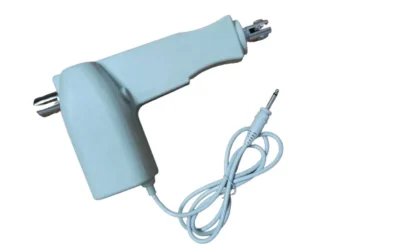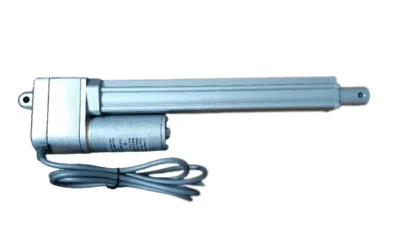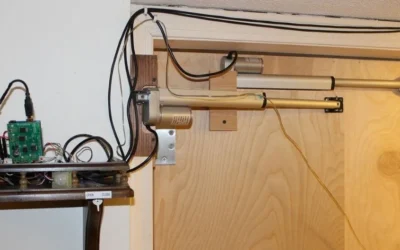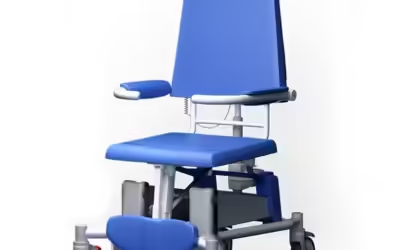BlogS
Electric Actuator in the Foldable Staircase: Safety
Kathir Sudhir Automation India is a premier provider of electric actuators for foldable staircase, delivering dependable solutions for seamless automation and improved safety. In recent years, advancements in technology have revolutionized various industries,...
Electric Actuator: Revolutionize Your Automation Game! 💡
Kathir Sudhir Automation India is a leading solution provider, specializing in automation with electric actuators. We deliver innovative, efficient, and reliable technologies for a wide range of applications, ensuring superior performance and control. Electric valve...
What is Actuators: A Comprehensive Guide
In the world of automation and robotics, actuators play a pivotal role, driving movement and enabling various mechanical operations. But what is actuators? How do they work? And what types are available? Let's delve into the realm of actuators to answer these...
Electric Actuator in the Automated Secret Bookcase Doors
electric actuator Electric actuators for Automated Secret Bookcase Doors provide smooth and reliable operation, seamlessly integrating advanced technology into stylish, hidden compartments. Welcome, fellow adventurers, to a realm where hidden passages and secret...
Electric actuator in the World of TV Adjustable Tables
Discover electric actuators for TV adjustable table. Achieve effortless, precise adjustments for optimal viewing with our advanced and reliable solutions In today's fast-paced world, where comfort and convenience are paramount, innovative solutions constantly emerge...
Electric Actuator in The Toilet Transport Wheelchair
Improve mobility and ease with electric actuators for toilet transport wheelchairs. Experience smooth, reliable adjustments for enhanced comfort and functionality. In the realm of accessibility and mobility aids, innovation knows no bounds. From state-of-the-art...
Frequently Asked Questions(FAQ)
What is a linear actuator?
A linear actuator is a device that converts rotational motion into linear motion. It is used to move objects in a straight line
What are the benefits of using a linear actuator?
The benefits of using a linear actuator include precise and controlled linear motion, compact size, easy installation, and efficiency.
How do I install and maintain my linear actuator?
The installation and maintenance of a linear actuator will depend on the specific model and type. Refer to the manufacturer’s instructions for installation and maintenance guidelines.
What safety precautions should I take when working with linear actuators?
Always follow the manufacturer’s instructions and safety guidelines when working with linear actuators. Ensure that the actuator is properly secured and that the power source is disconnected before working on the actuator.
What is the difference between a linear actuator and a rotary actuator?
A linear actuator moves in a straight line, while a rotary actuator rotates around an axis. Linear actuators are used when linear motion is required, whereas rotary actuators are used when rotational motion is needed.
What is the difference between an electric linear actuator and a hydraulic linear actuator?
An electric linear actuator uses electrical energy to create linear motion, while a hydraulic linear actuator uses pressurized hydraulic fluid to create linear motion. Electric linear actuators are typically easier to install and maintain, while hydraulic linear actuators can generate higher force.
Can a linear actuator be used for precise positioning?
Yes, linear actuators are often used for precise positioning due to their ability to provide accurate and repeatable linear motion.
How do I determine the stroke length of a linear actuator?
The stroke length of a linear actuator is the distance the actuator can travel in a straight line. To determine the required stroke length, consider the distance the actuator needs to move to complete its intended task.
What are some common materials used to make linear actuators?
Linear actuators can be made from a variety of materials, including aluminum, stainless steel, plastic, and carbon fiber. The choice of material will depend on the specific application and environmental conditions.
Can a linear actuator be used in hazardous environments?
Yes, some linear actuators are designed for use in hazardous environments and are made from materials that can withstand exposure to extreme temperatures, chemicals, or other hazardous conditions.
Can a linear actuator be customized to fit my specific application?
Yes, many manufacturers offer customized linear actuators to fit specific applications. These can include modifications to stroke length, force, speed, mounting options, and environmental protection.






